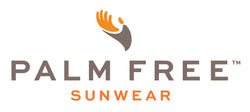Most Common Areas on the Body Where Skin Cancers Develop Pt. 2
Simply put, those regularly uncovered areas on our bodies receive the brunt of the sun’s chronic and intense ultraviolet radiation exposure.
The head and neck
Most people don’t wear hats, or when they do they wear baseball caps. The bill of the cap shades the forehead, scalp and upper central face (eyes and nose bridge). It does not cover the ears, back of the neck, sides of the neck and face, nose tip, lips, nor the chin.
In dermatology practice our full body skin exam always includes the head and neck. The face has depressions, convexities, deep wrinkles and flat areas in which small basal cell carcinomas can grow quietly until they are large enough to ulcerate and bleed. We always evaluate the lips and SCCs can occur there as well. During a skin exam a lot of the time is spent looking at the head and neck.
The scalp
Especially on men and women with thinning hair and as we age, the scalp tends to get a lot of precancers, squamous cell and basal cell carcinomas. Melanomas do occur but not in the frequency of the aforementioned.
The ears
The ears stick out from a baseball cap and get burned on a regular basis. Covering the ears, or wearing sunscreen, is imperative to avoid getting precancers (actinic keratoses) and SCCs, BCCs and melanomas. Melanomas and SCCs can be very dangerous for 2 reasons: 1, the head and neck have a massive blood supply and 2, if a skin cancer grows overlying the cartilage on the ear it provides a path of least resistance to spread. Melanomas and SCCs can easily grow, following the path into the curvatures of the ears.
Recommendations for protecting the head, scalp and ears, is to wear a wide brimmed hat or visor (if you have good hair coverage). My favorite sun protective hats are Sunday Afternoons Hats. For the neck, NeckBlock is my go to chest and neck coverage accessory.

The arms and hands
Our hands, more than our arms, are always exposed. We need the dexterity to manipulate things, the tactility to sense pressure and texture and the overall grip to hold and grab things. Hence, our hands are rarely protected from the sun. Tennis players, golfers, pickleball players frequently develop AKs, SCCs and BCCs on the back of the hands and arms. Melanomas do occur as well, but not at the rate of SCCs, AKs, and BCCs.
For the arms, any good quality sun protective sleeve or long sleeve shirt will do. Bloq UV has a wide variety of light-weight sun protective long sleeve shirts for men and women. For combined hand and arm coverage, check out our PalmFree™SunSleeves. These are full sleeves with the extended PalmFree™ hand cover.
For the hands, you just can't beat the UPF 50 PalmFree™SunGloves. These provide coverage of the back of the hands, over the thumb and finger knuckles, areas we dermatology providers treat AKs and skin cancers. These are easy to slip on, slide off, and since 90% of the palm is exposed you keep your full tactility, dexterity and natural grip.

The legs
If you are a frequent wearer of shorts, or a bicyclist, golfer or tennis or pickleball player you most likely wear shorts regularly. The skin on the front of the lower legs takes a lot of sun damage and as we age AKs and SCCs can develop, especially in those over 65 with a long history of sun exposure. Melanomas and BCCs do occur on the legs as well. For bicyclists, the calves endure a lot of ultraviolet damage.
Wearing yoga pants, leggings or knee high socks will help reduce the risk of skin cancers on the legs as well as wearing light-weight long pants. Columbia Sportswear has many options for men and women.
Abbreviations: SCC- squamous cell carcinomas, BCC - basal cell carcinomas, AK - actinic keratosis (precancers).
For the May, Skin Cancer Awareness month, we are donating $1 per order to the Arizona Skin Cancer Foundation.




